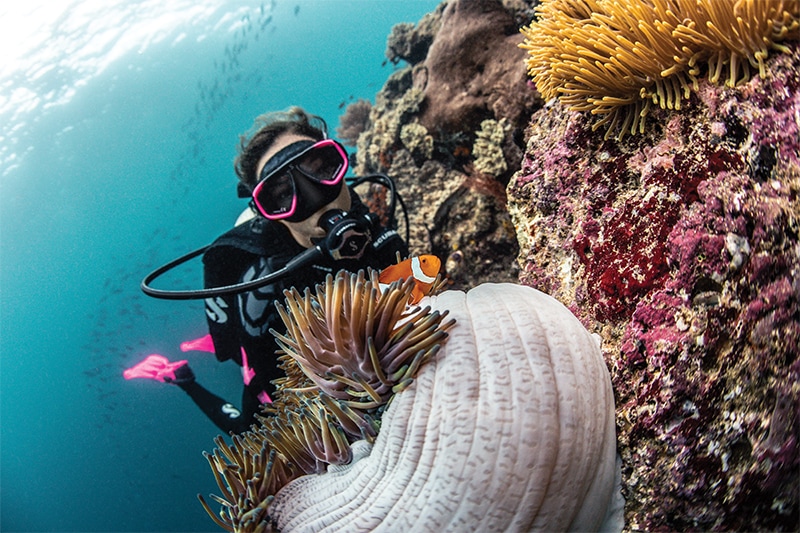Choosing a Prescription Scuba Mask

Scuba diving is a window to a world most people don’t ever get to experience. And since scuba is all about seeing this unique underwater landscape, it’s important that scuba divers are actually able to see it. In the United States, 3 out of 4 people wear some kind of corrective lenses, and glasses are over three times more common than contact lenses.
Some people don’t need corrective lenses all of the time. Many people only wear glasses for reading, or driving. And water does magnify things a little. But there are still plenty of people who need more help than that. And that means figuring out how to take their corrective lenses underwater with them.
Wearing contact lenses to dive is an option, but you have to be extra careful. Hard and gas-permeable lenses should be avoided. As you dive deeper, these lenses can become painful and cause blurry vision under the added pressure.
If you do dive with contacts, be sure to keep water out of your lenses. Close your eyes any time that water gets in your mask, or when you remove or clear your mask. You don’t want to lose a contact lens underwater, and you don’t want to get an infection from ocean water contaminants in your lenses. Clean your lenses (and eyes) with clean water when you’re done, and consider diving in daily disposable contacts, rather than re-using lenses from a dive.
Corrective Prescription Dive Mask Options
There are a few ways to get prescription dive masks. You can make a true prescription mask by having custom lenses added to existing scuba diving masks. You can also find masks that allow for drop-in corrective lenses, letting you make a prescription dive mask that suits your individual needs.
Pros and Cons of Custom Prescription Dive Mask Lenses
Custom lens’, this may be the only way to get very strong prescriptions in your dive mask.
Pre-made lens options can be surprisingly versatile, but they have their limits. Nearsighted lenses tend to cap out somewhere between -8.0 and -10.0. Farsighted correction seldom goes beyond +4.0 or +5.0. If your lens strength is higher than that, you may need to go with a custom lensmaker.
Drop-in Lenses
Another option is getting a special mask made for swappable prescription lenses. The Zoom Dive Mask is made so that you can change the lenses out for the appropriate prescription yourself, without tools, in less than a minute. Replaceable lenses are available from -1.0 to -8.0 in .5 diopter increments, offering much stronger correction than glasses wearers typically expect from off-the-rack prescription lenses. You can also get lenses for the D-Mask that offer correction for farsightedness and nearsightedness alike, with a range from +4.0 to -5.0. And if your vision changes over time, you can simply replace the lenses, rather than purchase a whole new mask.
The Flux Twin Dive Mask is a low-volume, dual lens mask that’s great for situations where you need a slim profile. The strong, polycarbonate frame is impact-resistant and made to withstand a lot of use.
Magnifiers and Bifocal Options
You may also find yourself in need of magnification or bifocal options for diving. Bifocals can help divers who pursue photography or underwater video. It can also help you quickly read your dive computer or gauges.
Consider drop-in bifocus lenses like those that work with the Zoom Mask and Flux Twin Dive Mask. Made for quick, easy installation without special tools, drop-in bifocal lenses can help you keep your eye on the task at hand.
See the Sights
Vision problems shouldn’t hold you back from enjoying the world of scuba diving. If you have trouble seeing, there are a variety of solutions that can help you get the most from your diving at the right balance of price, flexibility, and comfort. Find the prescription dive mask lenses that work for you, and enjoy seeing the world underwater.






